The string-of-text at the top edge of the image below
is the Japanese word for POSTCARD.
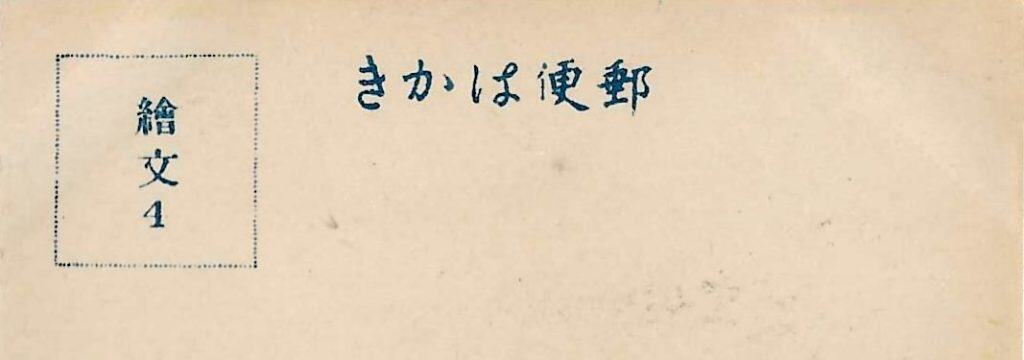
Japan is generally considered a cash society with the Japanese Yen being the currency of the country. The currency code for Yen, used primarily in foreign exchange markets is JPY, and the currency symbol is ¥ (a capital letter “Y” with two strikethroughs in the same fashion as the British Pound Sterling, the international Euro, and the Indian Rupee.
Since Japan joined as a founding member of the Universal Postal Union in 1874, Japanese postcards are required to have a stamp box. Japan has embraced the 21st century in a more complete way than any other Asian country, but they have solved problems by conforming to international standards. However, they have done so – slowly!
Likely a tradition that has been the slowest to change is the one called “nengajo.” On January 1st millions practice the exchange of nengajo cards. Simply, these are greetings sent, or delivered in person, to relatives and friends. A nengajo card is meant to serve as a way to reconnect with others, and to express gratitude for a deed done sometime during the previous year.
The New Year’s celebration, known as “Shogatsu,” is rich and valued and it typically lasts from New Years Day to January 3rd. It continues on a centuries old base steeped in customs that blend with Shinto, Buddhist, and dozens of folk traditions.
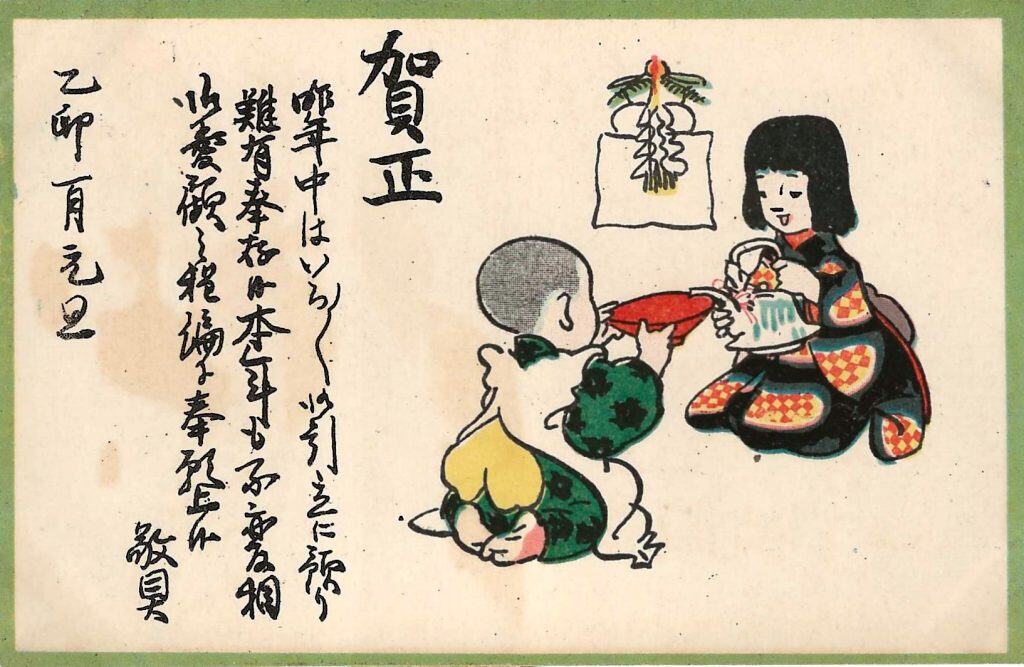
Preparations for the New Year in Japan begin well before January. People clean their homes to remove any negativity that may have formed the previous year. They wait for the upcoming good fortune that comes with the turning of a calendar’s page. Millions of homes are decorated with “kadomatsu,” a pine decoration placed at the entrance. Pine in Japan is a symbol of prosperity and good health. It is also considered to embody lasting happiness. Also “shimekazari,” a sacred straw rope, is often hung on doorways to ward off evil spirits.
On New Year’s Eve, it is customary to eat “toshikoshi soba,” a buckwheat noodle that engenders longevity. As the clock strikes midnight, many people visit shrines and temples to witness “hatsumode.”
Hatsumode is a Japanese word that means a first appearance or meeting. To witness hatsumode is to greet the new year. This first shrine visit of the year is the only time a Japanese person should pray for themselves – for their own health, happiness, and success.
The first day of the new year, known as “Ganjitsu,” is reserved for special meals such as “osechi ryori.” It consists of beautifully prepared dishes, such as “kuromame” (sweet black soybeans) and “kazunoko” (herring roe).
“Ganjitsu” is also a time for family games like “hanetsuki” (a badminton-like game) and “karuta” (a card game), as a way to bond and celebrate with others and they do so far away from a television.
While modern influences have led to some changes in how New Year’s is celebrated in Japan, many traditional practices remain. Shogatsu is not just a celebration of the past, it is a time for hope.
***
If you intent to collect Asian New Year postcards be sure to ask for New Year Festival Cards from nations across the continent, like China – hunjie; Vietnam — Tet Nguyen Dan; Mongolia — Tsagaan Sar; Korea — Seollal; Thailand — Songkran; and don’t forget Japan’s — Shogatsu.
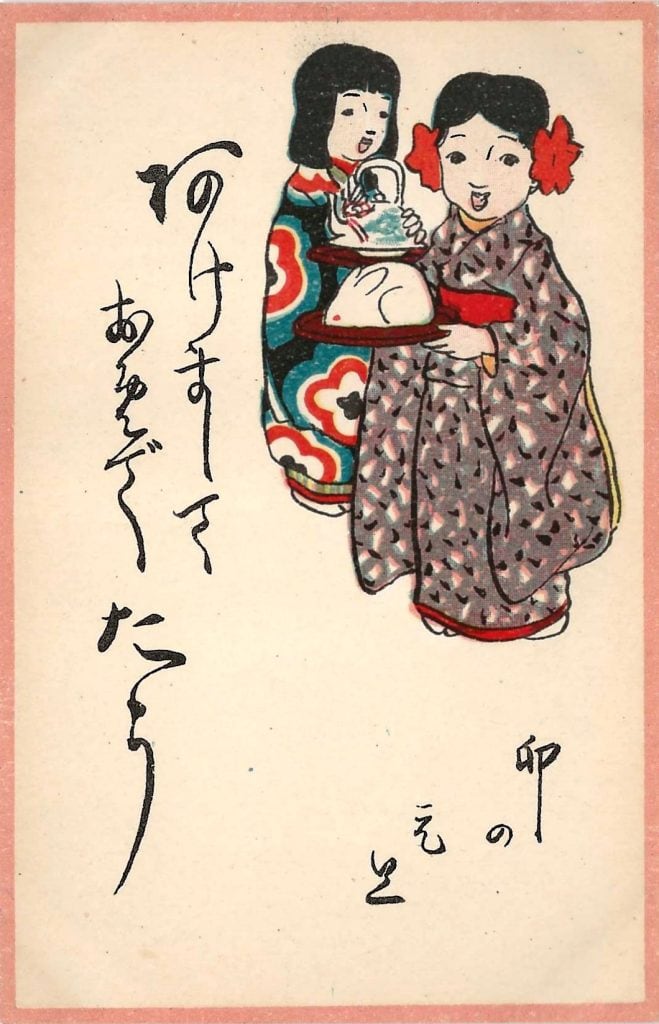
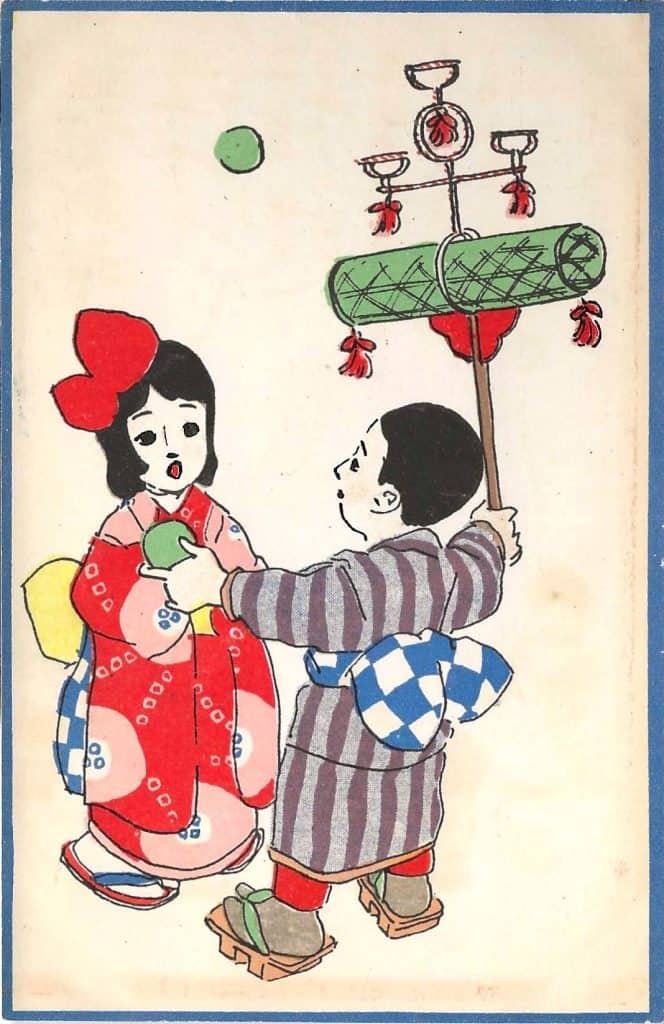
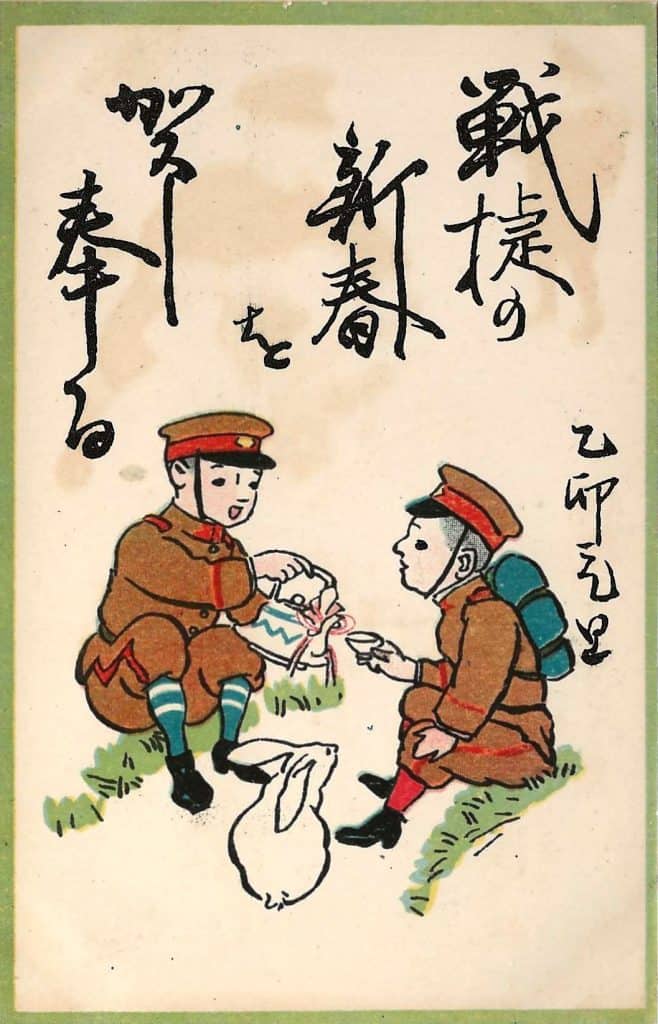
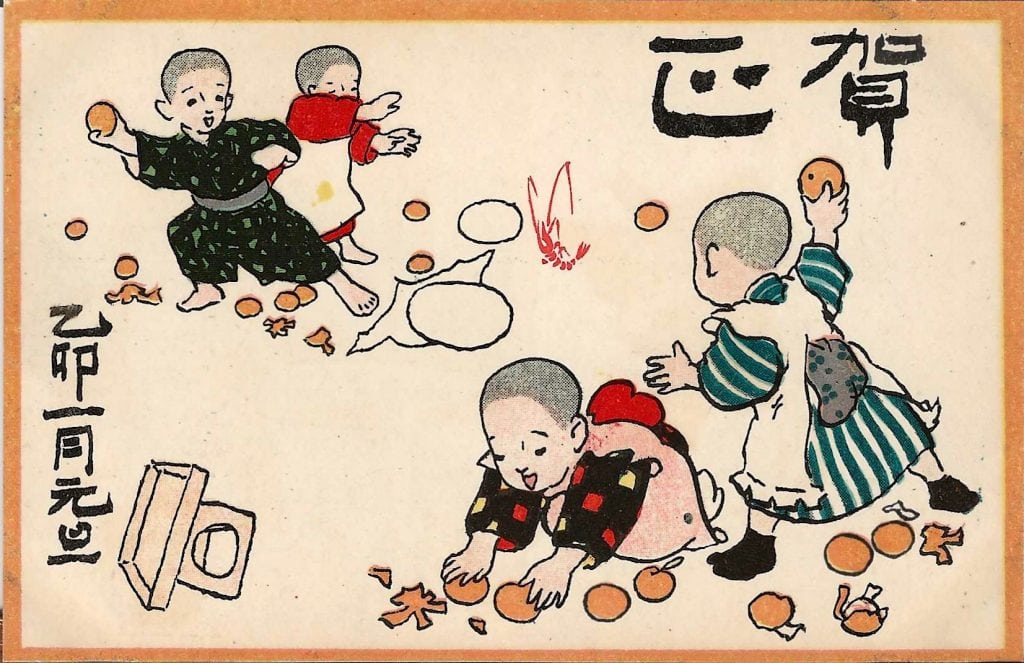
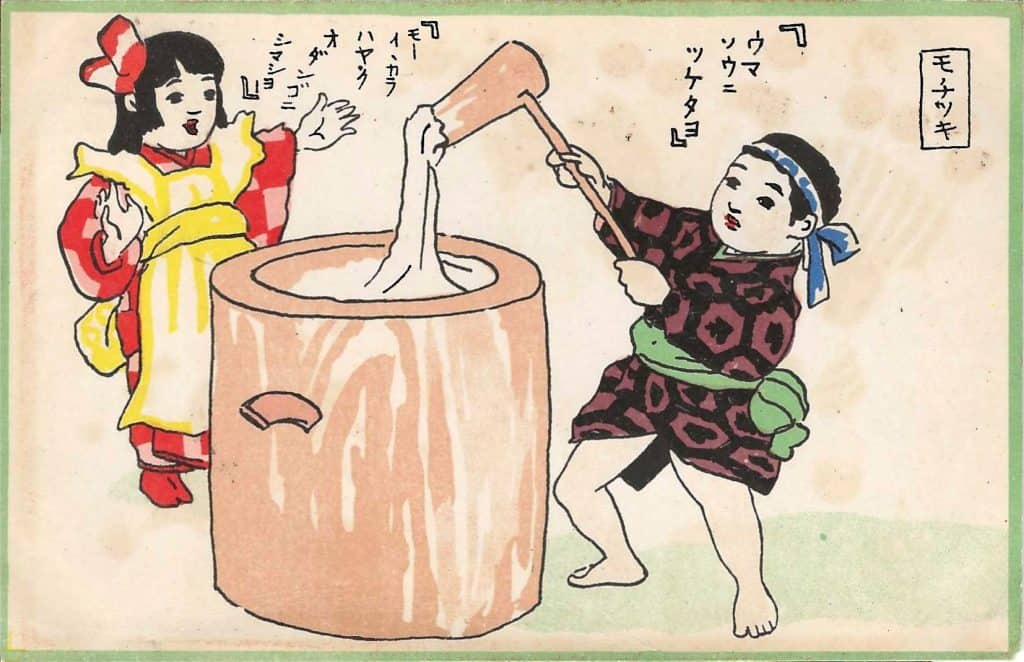
Crossword constructors and solvers are very familiar with the Vietnamese word “Tet”.
Since I collect certain topics, I am often drawn to postcards depicting those topics, regardless of country of origin. But sometimes I wish they were of a uniform size.